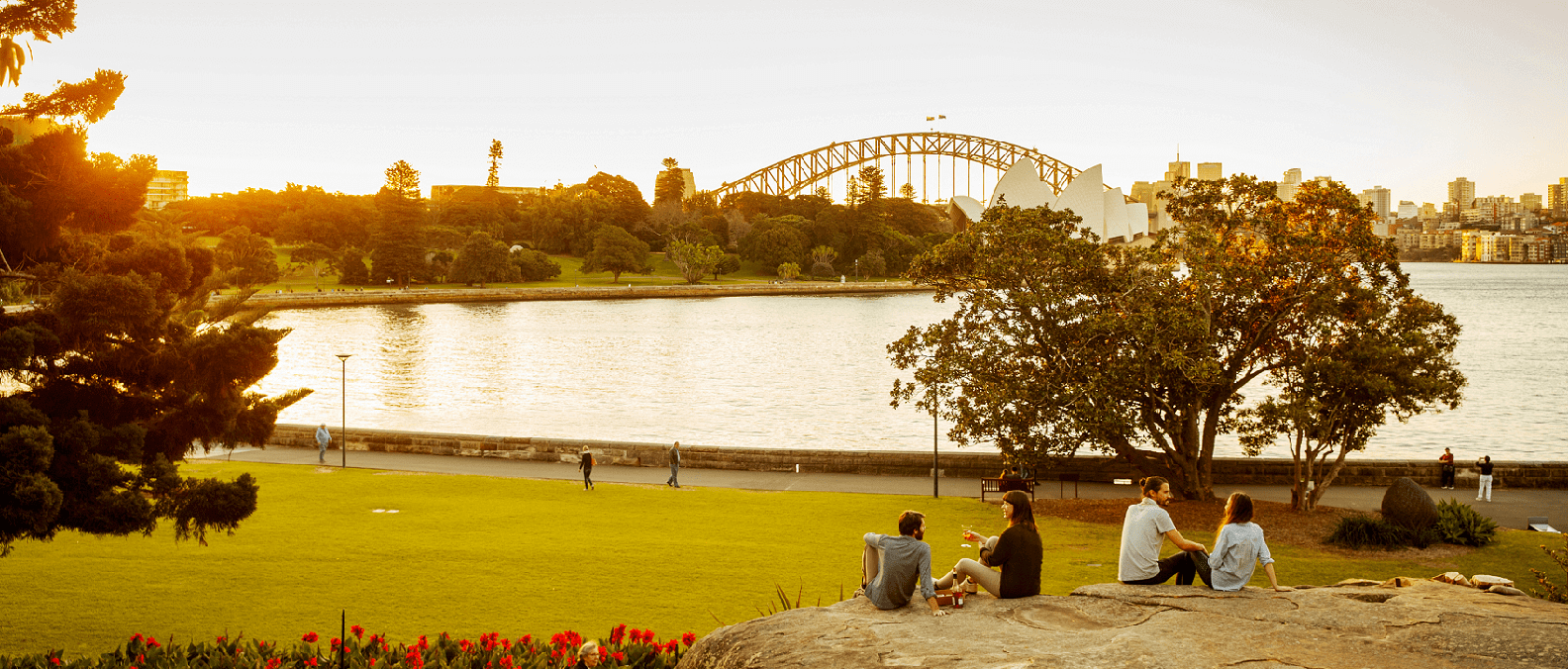Digging into our history – 2000s
The Royal Botanic Garden Sydney’s history is no ordinary tale, despite the name, it wasn’t until 1959 that it became ‘Royal’.

There is much more to the Gardens than just flowers and stunning horticultural displays. This three-part blog series will travel through the 202 years of existence and delve into the exciting history of one of Australia’s most popular tourist attractions.
1990s-2000s: Dinosaurs in a modernising Garden
The discovery of a Wollemi Pine in 1994 by National Parks & Wildlife Service Ranger David Noble kick-started international wonderment. The Garden’s staff and expertise became central to the story and instrumental in the conservation and propagation research that ensured the ancient trees survival.
The first Wollemi Pine grown with human hands was planted at the Garden in 1998, and are now grown across Australia.

The Wollemi Pine had never been seen before 1994 and was assumed to be extinct, only through fossil records did we know it existed.
After it's discovery, the pine went straight to the 'Critically Endangered' species status and botanic gardens around the world began to propagate seedlings.
During this time, the Gardens continued to expand and develop. The industry leading Cadi Jam Ora: First Encounters interpretive display was opened and the first full-time Aboriginal Education Officer was employed to acknowledge and celebrate the original Cadigal inhabitants of the land.
Citizen science, education and conservation messaging became a key priority for the Garden, and new programs were enabled to share the Garden’s expertise with community groups, local councils and other public landowners who managed threatened species and rehabilitated lands.
The Garden, while the keeper of an old form of science, was also at the leading edge of the new. In 2004 staff played a lead role in the implementation of Australia’s $10M Virtual Herbarium, a database project which makes all of the information held in the major herbariums collections in Australia publicly available.
After decades of planning the Australian PlantBank was opened in 2013 at the sister garden, The Australian Botanic Garden Mount Annan, in Sydney’s south west, with scientific research and the seedbank facilities now recognised as above international standard. The connectedness between the science, research and storage of the Royal Botanic Garden Sydney and the Australian Botanic Garden Mount Annan has grown the Garden’s capacity substantially, and has further entrenched the Garden as a leader in its field.

Opened in October 2013, the Australian PlantBank is a seed bank, part of the Millennium Seed Bank Project.

It is an important science and research facility, where horticultural scientists work on conserving some of the worlds most endangered species.
2010s-2016: A BOP (Big Old Party)
In 2016, the Garden celebrated its 200th Birthday. To commemorate, the Gardens opened its newest attraction - The Calyx. The Calyx is an ever-evolving horticultural and event space to see, share, relax, discover and to be inspired, attracting over 280,000 visitors since it was opened.
Since opening, The Calyx has hosted ' Sweet Addiction: the botanic story of chocolate', 'All About Flowers', 'Pollination' 'Plants with Bite' and it's latest 'Love your Nature'.

Pollination at The Calyx
It may be over two centuries old but the Royal Botanic Garden Sydney is always evolving to keep pace with the needs of the community. It has been noted that drought and disease are probably less of a threat to the Garden’s future as disinterest. For the Garden to survive and thrive, it must continue to remain relevant to the community it serve

2018 and beyond: The digital revolution
At its core, the Royal Botanic Garden Sydney is, and always will be, a scientific institution. As the oldest scientific institution in Australia, and one of the most important botanical institutions in the world, it has a responsibility to ensure the future of the plants and this planet.
The Gardens are in fact, a ‘living labs’. Not just as a place of stunning horticultural displays in spectacular locations, but a place where world-leading plant scientists are embracing some of the most critical challenges facing humanity today. Plant sciences are a vital science, as without our plants we would have no food, no wine, no future.

The Gardens are focusing on encouraging the younger generation to reconnect, engage and interact with nature. As part of a digitizing world, the Gardens turned its eye to technology and encouraged visitors from all around the world to connect to the Gardens through new interactive smartphone apps, allowing them to learn more about the Garden through a series of online tours and augmented reality experiences.

Connected Garden allows visitors to connect to the Garden and the rest of the world.
To continue along the theme of public engagement, in July 2018, the Botanic Gardens launched Garden Explorer: an extensive online database of all the plants across all the botanic gardens. The new technology uses GPS to map out the plant life and provide visitors with guided routes through the Gardens to find the plants they are interested in.

An artists impression of the Centre of Innovation in Plant Sciences.
The Botanic Gardens are positioned in some of the most iconic areas of New South Wales, and have a rich history of pushing boundaries and adapting to a developing world. This is why they remain some of the best gardens in the world, continually producing ground-breaking research. Stay tuned for another two centuries, and you will see the gardens continue to grow, just like the plants they contain.
If you enjoyed our three-part history series, in celebration of the Royal Botanic Garden’s 202nd anniversary, take a look at our Discover and Learn section.